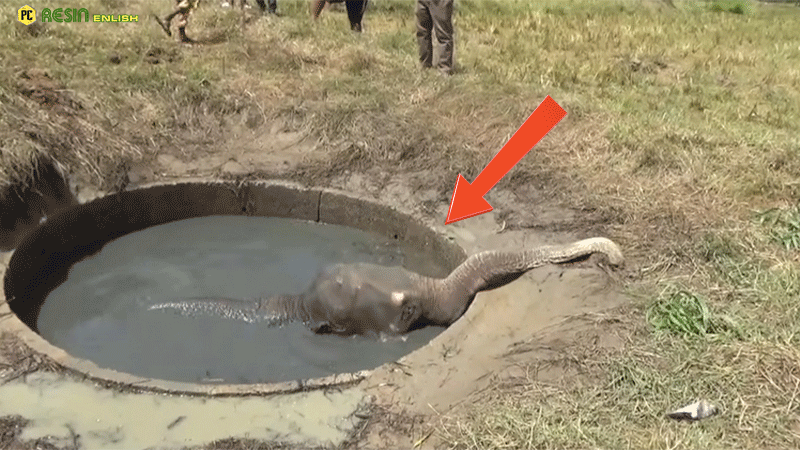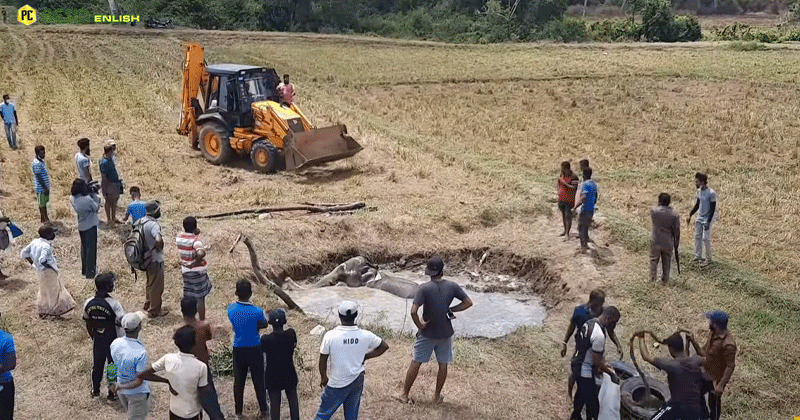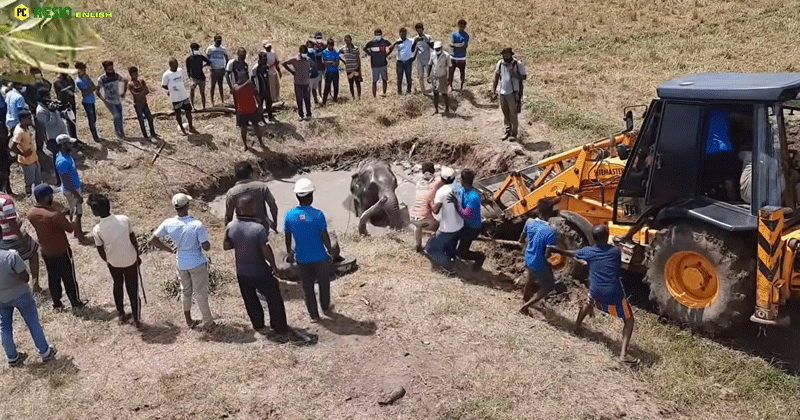In a secluded agricultural region concealed within a thick thicket, an anguishing scene unfolded as an elephant became ensnared in an abandoned well for nearly three days.
The desperate creature’s predicament went unnoticed due to a limited human presence in the area until its weakened condition became apparent. Such rescue operations typically involve diggers to extract elephants from mud-hole wells.
However, this time, the situation presented a distinctive challenge as the well was enclosed by an imposing concrete wall, preventing the elephant from escaping autonomously.

Efforts for rescue were further complicated by the slippery surface of the concrete walls, heightening the risk of harm to the distressed animal during an attempted rescue utilizing a digger.
In wells with mud walls, elephants can sometimes generate the necessary traction to liberate themselves by employing their legs, but this alternative was unavailable in this case.
Observations unveiled that a tree trunk had been cautiously positioned behind the well, likely an endeavor by locals to assist the elephant in standing.

Despite the endeavors of conservation agents and the locals, the elephant seemed too depleted to respond to their attempts to coax it out of the well.
After meticulous consideration, the rescue team initiated the task of dismantling the concrete barrier while ensuring the elephant’s well-being. Patience and unwavering devotion were instrumental as they aspired to rescue the ravenous and fatigued elephant.
Finally, after numerous obstacles and hardships, the rescue team liberated the elephant from its distressing predicament. Cheers of elation and relief erupted as the majestic creature treaded back onto firm ground, triumphing over its terrifying ordeal.

This heartwarming rescue serves as a reminder of the significance of wildlife preservation and the unwavering commitment of those who tirelessly labor to safeguard and nurture our planet’s splendid creatures.